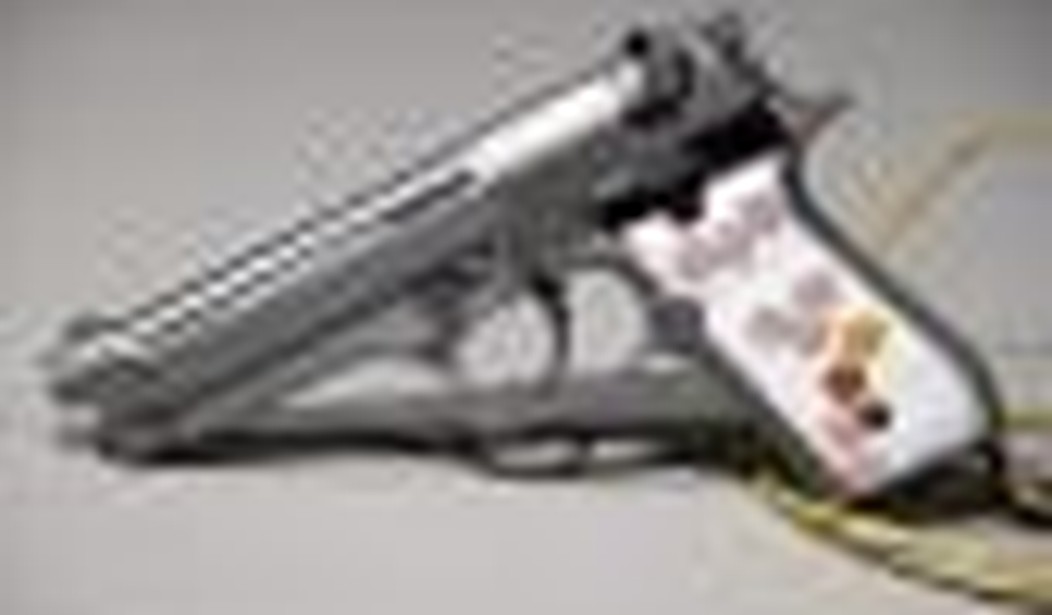Earlier this week, I was invited to be Benjamin Rockwell’s guest on Digital Computer Talk, to record a segment for an episode of his nationally syndicated broadcast radio show (prior episodes here). The subject was “smart gun” technology and the discussion centered around whether an implementation of that technology could have stopped or minimized the carnage in the Fort Hood terrorist attack or any of the other mass shootings that have taken place in recent years.
A hypothetical “what if” version of events was assumed, where civilian firearms — including Major Hasan’s FN pistol — had been enabled with smart gun technologies. In that scenario, it was posited that responding law enforcement officers could end the massacre from a distance by broadcasting a fail-safe signal to the weapon, disabling it. We then spent the better part of a half hour discussing why that scenario will remain nothing but a pipe dream for the foreseeable future.
The underlying dream of smart guns has been around for well over a decade and the basic premise is simple: design and build a firearm that works for authorized users, but not for anyone else. The concept gained widespread public attention in the early 1990s and hoped to offer a solution to the problem of law enforcement officers having their own guns used against them in struggles with criminals.
There have been several technological approaches used over the years in the quest for smart guns.
The simplest attempt at building a gun that only works for authorized users has been on the market for over a decade. The basic system requires the user to wear a special magnetized ring, with the magnet in the ring disabling an internal device that physically blocks the trigger from being used. The first practical versions, such as the Smart Lock Technology Inc. “Magloc,” weren’t commercially viable until around 1995 and never really caught on. While retrofitting the guns was fairly inexpensive, agencies did not like officers having to rely on an external device (the magnetized ring). There was also a concern that the device, once widespread, could easily be thwarted by criminals who fabricated their own rings. Then there were the legitimate concerns of the officers themselves about the reliability and durability of the system, and the fact that such a weapon could not be used by the officer’s “off” or non-dominant hand if the need arose.
Other technologies that have been attempted include a now-defunct system by Colt that used a radio signal emitted by a bracelet, and a much larger shotgun-based system using a passive user-worn RFID ring is still being marketed as — I kid you not — the iGun.
A biometrics-based prototype claiming to “learn” its owner has been under development for quite some time at the New Jersey Institute of Technology, but their Beretta-92 series-based prototype is something less than svelte (PDF), with a core processing unit roughly the size of a netbook. Even Metal Storm, the Australian arms company noted for its innovative electronically fired weapons, has been unable to bring a functional smart gun to market, even though they contracted with the U.S. National Institute of Justice to have a reliable system on the market by 2003.
So why have smart guns been “just a few years away” for a decade or more?
The simple fact of the matter is that technological hurdles are only part of the problem, and there are only very few people who have any real interest in seeing the technology come to fruition. Traditional defenders of gun rights have joined with their anti-gun foes to attack what both sides consider a gimmicky solution.
A fact sheet from the National Rifle Association (NRA) comes out strongly against smart guns as both a safety concern and a potential attempt at gun control, as the cost of the technology might price some potential gun buyers out of the market. While technology costs typically go down over time and may be waning as a barrier, there is still a great deal of concern over the viability and safety of smart guns. The NRA goes on to cite a statement from Italian firearms manufacturer Beretta, which still holds true:
Careful consideration has not been given to potentially dangerous risks associated with these concepts. In our opinion, such technology is undeveloped and unproven. In addition, Beretta strongly believes that “smart gun” technology or “personalized” guns (hereinafter also referred to as “smart gun” technology) could actually increase the number of fatal accidents involving handguns.
The position of firearms manufacturers and gun owners is that the existing experimental solutions would make guns less reliable and may also mislead gun owners into thinking that the locking mechanisms are a replacement for safe gun-handling and storage practices.
The argument from those who favor stricter gun control is captured in a release from the Violence Policy Center, which accurately notes that even the successful implementation of such technology would fail to have any impact at all on the hundreds of millions of firearms already in the public’s hands. The VPC also notes that these firearms, which they characterize as “personalized guns,” would have little to no effect on suicides (people who choose to end their lives with firearms tend to use their own guns) or homicides (people who choose to end the lives of others with firearms also tend to use their own guns).
Both sides agree that a mistaken public perception that the technology would make firearms less lethal would instead probably lead to an increase in injuries or no net change at all.
So could smart gun technology have made things substantially different at Fort Hood, the Binghamton community center, or the college shootings at Northern Illinois University or Virginia Tech? In a word, no. It is highly unlikely that the suspect would be armed with such a weapon and even if they were, the shooter would be the authorized user. If anything, a working smart gun in this situation would likely make the situation more untenable, making it even more unlikely that victims could overpower the shooter and turn his weapon against him.
Smart guns were wonderful in theory, but fail on the firing line in every way imaginable.









Join the conversation as a VIP Member